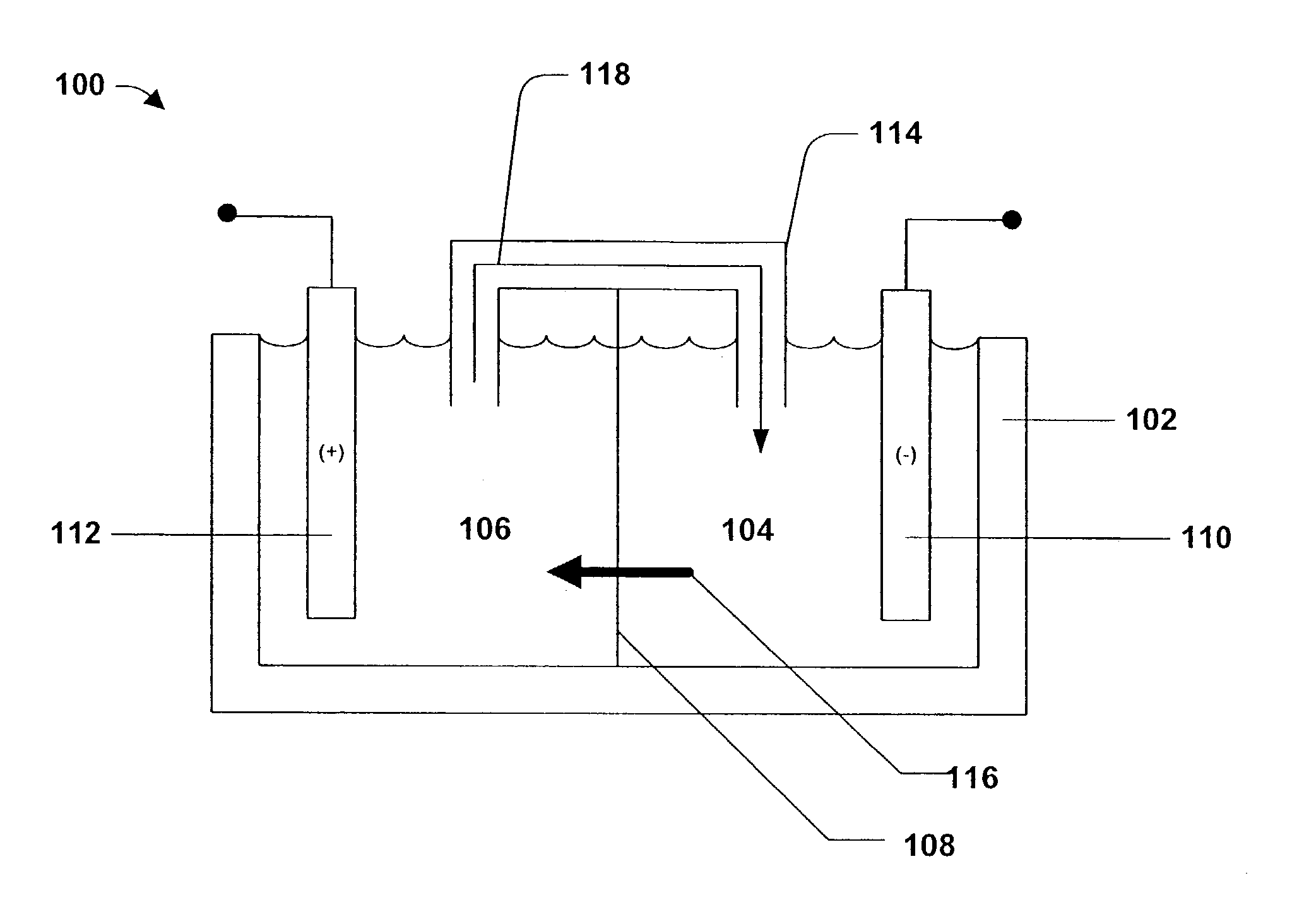Tin alloy electroplating system
a technology of tin alloy and electroplating system, which is applied in the direction of electrolysis components, electrolysis processes, cells, etc., can solve the problems of tin plating suffering from a significant drawback, undesirable formation of spontaneous latent whisker, and ductile finish that can scratch or mar easily, so as to minimize and/or eliminate latent whiskering, the effect of alleviating disposal, environmental and health concerns
- Summary
- Abstract
- Description
- Claims
- Application Information
AI Technical Summary
Benefits of technology
Problems solved by technology
Method used
Image
Examples
Embodiment Construction
[0011]The present invention can be employed for tin alloy electroplating. Generally speaking, electroplating involves metal in ionic form migrating in solution from a positive to a negative electrode. An electrical current passing through the solution causes substrates at the cathode to be coated by the metal (tin and alloy metal(s)) in solution. That is, in most embodiments, the substrate to be plated is the cathode.
[0012]Referring to FIG. 1, the tin alloy plating system 100 includes a power source (not shown) for providing current to an electrochemical cell 102 containing an anolyte compartment 106 and a catholyte compartment 104 separated by a selective membrane 108 (and this general arrangement may be repeated one or more times to provide electrochemical cells with a plurality of anolyte compartments 106, catholyte compartments 104, and selective membranes 108). The anolyte compartment 106 contains an anode 112 and an aqueous anolyte and the catholyte compartment 104 contains a ...
PUM
| Property | Measurement | Unit |
|---|---|---|
| diameter | aaaaa | aaaaa |
| diameter | aaaaa | aaaaa |
| current carrying capacity | aaaaa | aaaaa |
Abstract
Description
Claims
Application Information
 Login to View More
Login to View More - R&D
- Intellectual Property
- Life Sciences
- Materials
- Tech Scout
- Unparalleled Data Quality
- Higher Quality Content
- 60% Fewer Hallucinations
Browse by: Latest US Patents, China's latest patents, Technical Efficacy Thesaurus, Application Domain, Technology Topic, Popular Technical Reports.
© 2025 PatSnap. All rights reserved.Legal|Privacy policy|Modern Slavery Act Transparency Statement|Sitemap|About US| Contact US: help@patsnap.com



